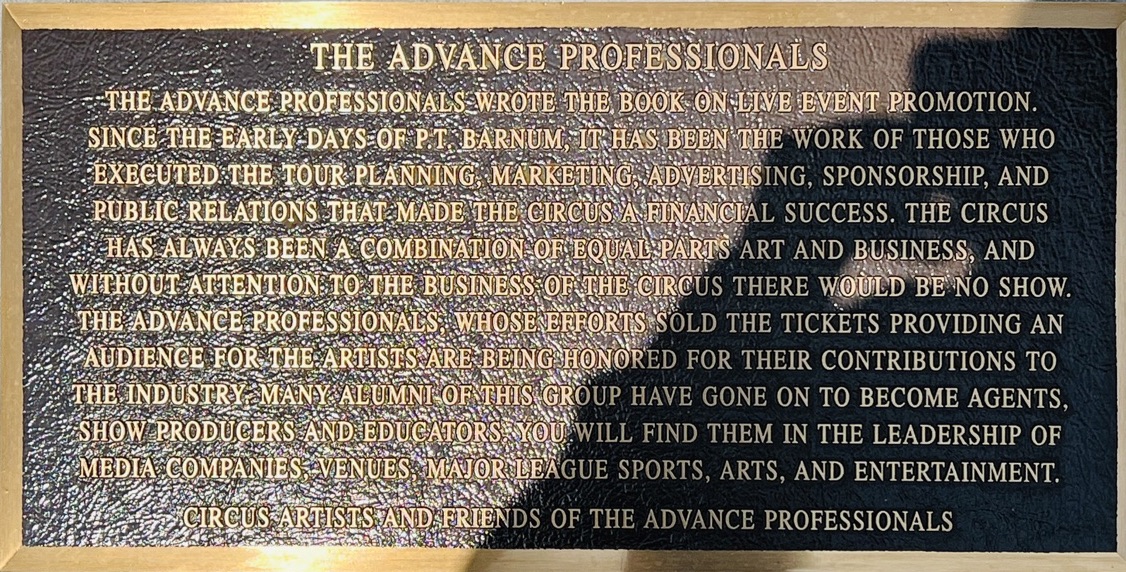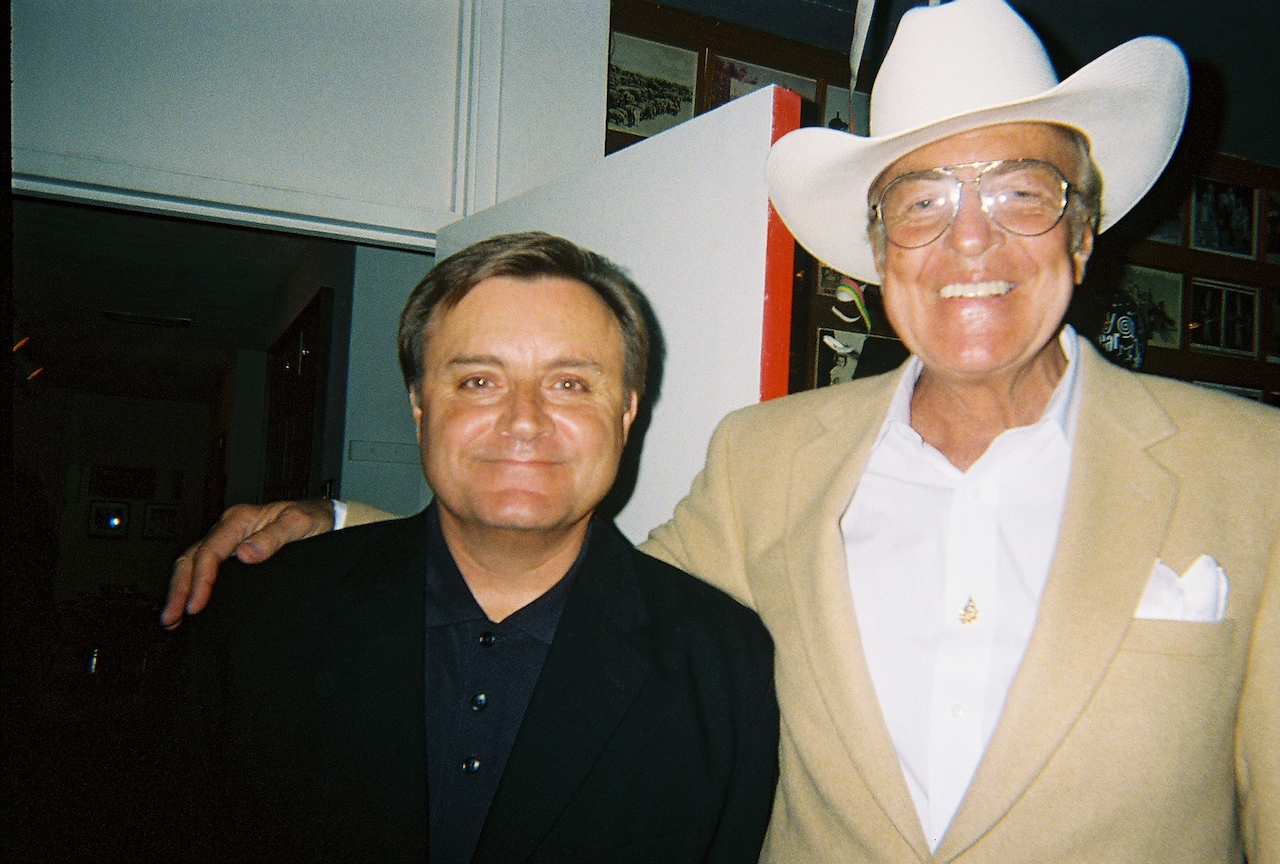
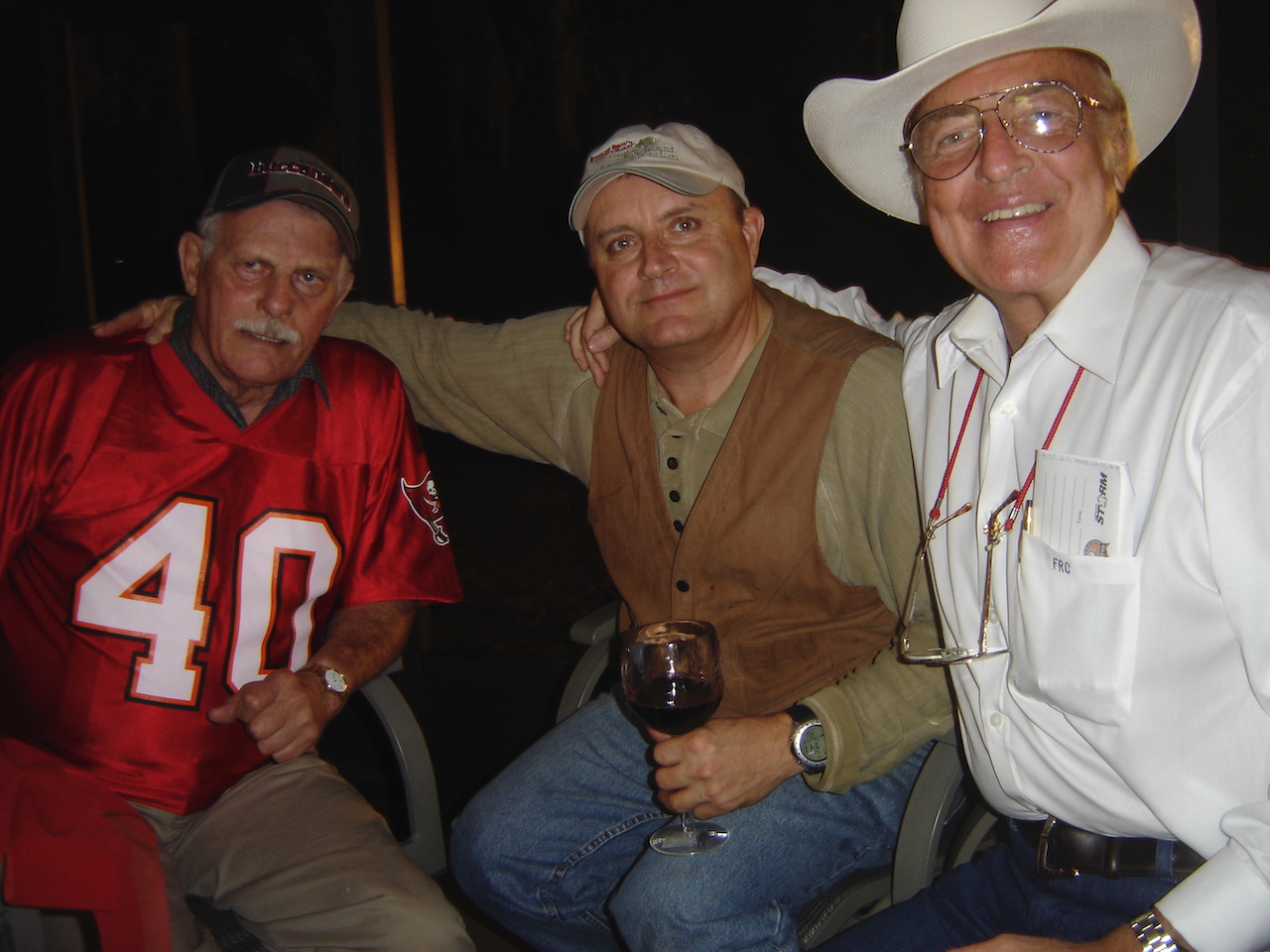
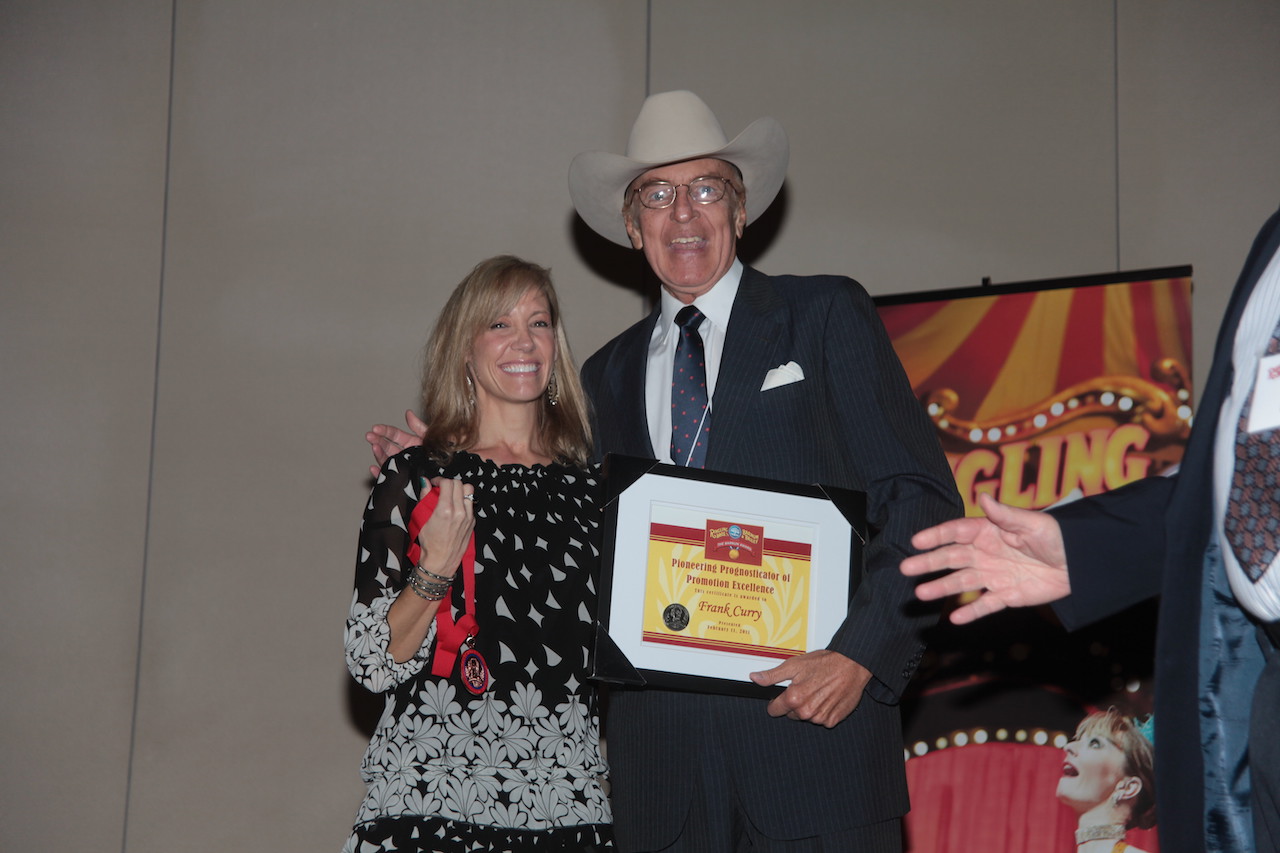
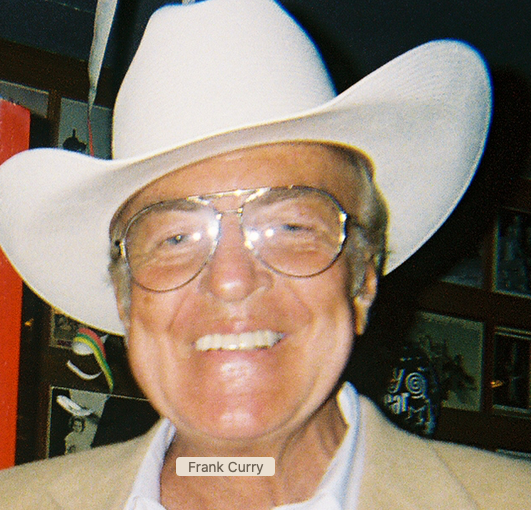



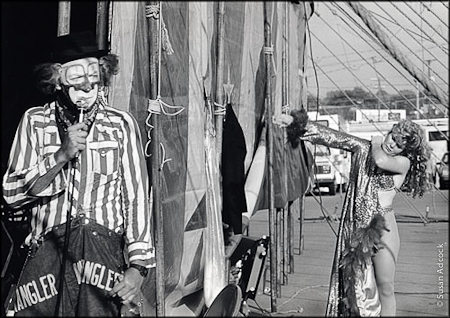
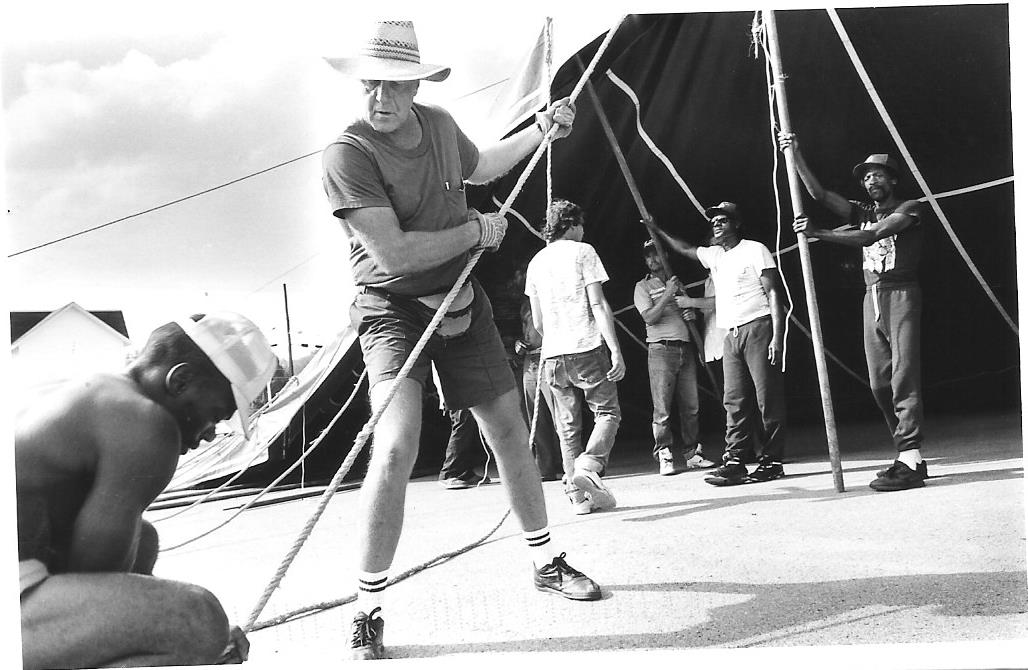
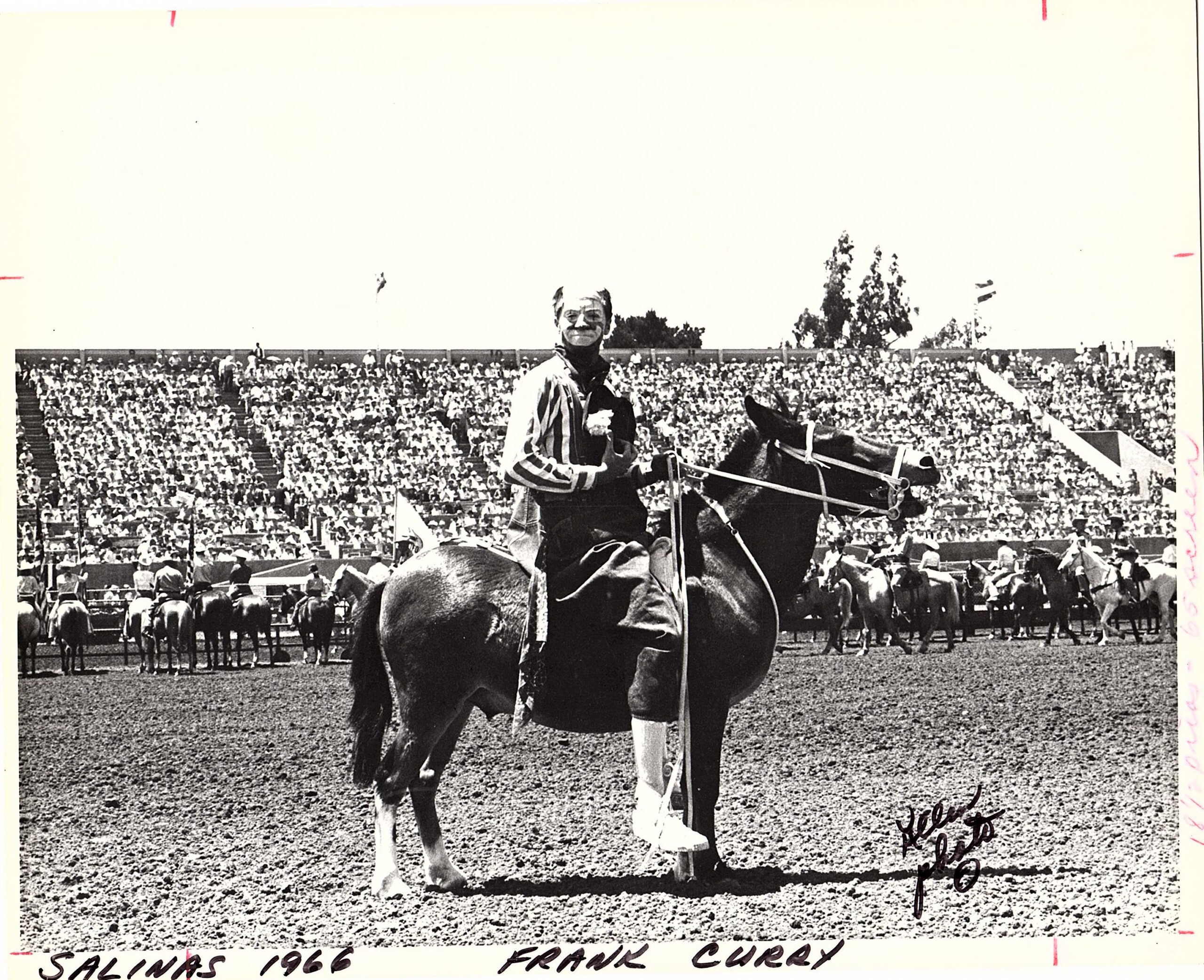
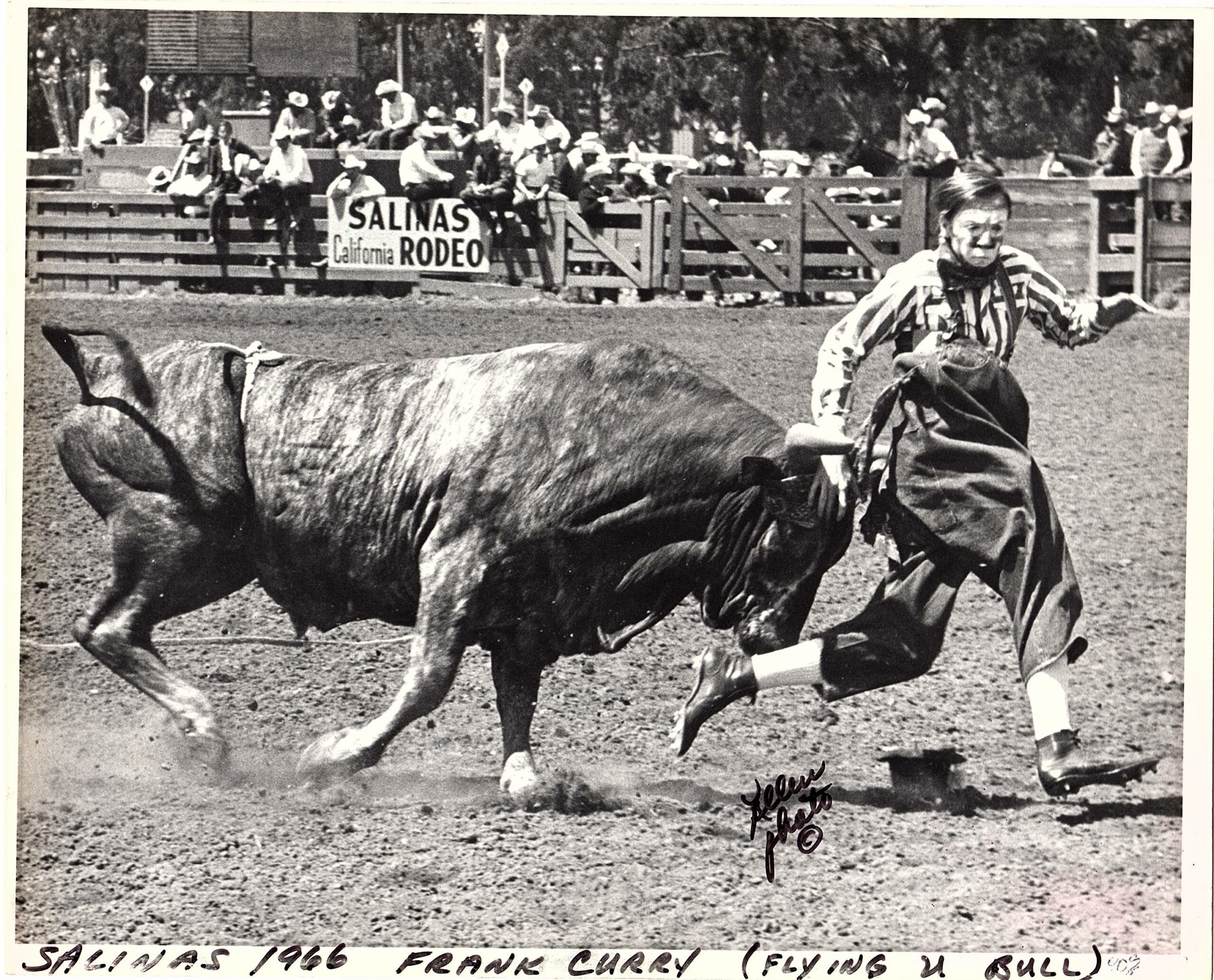
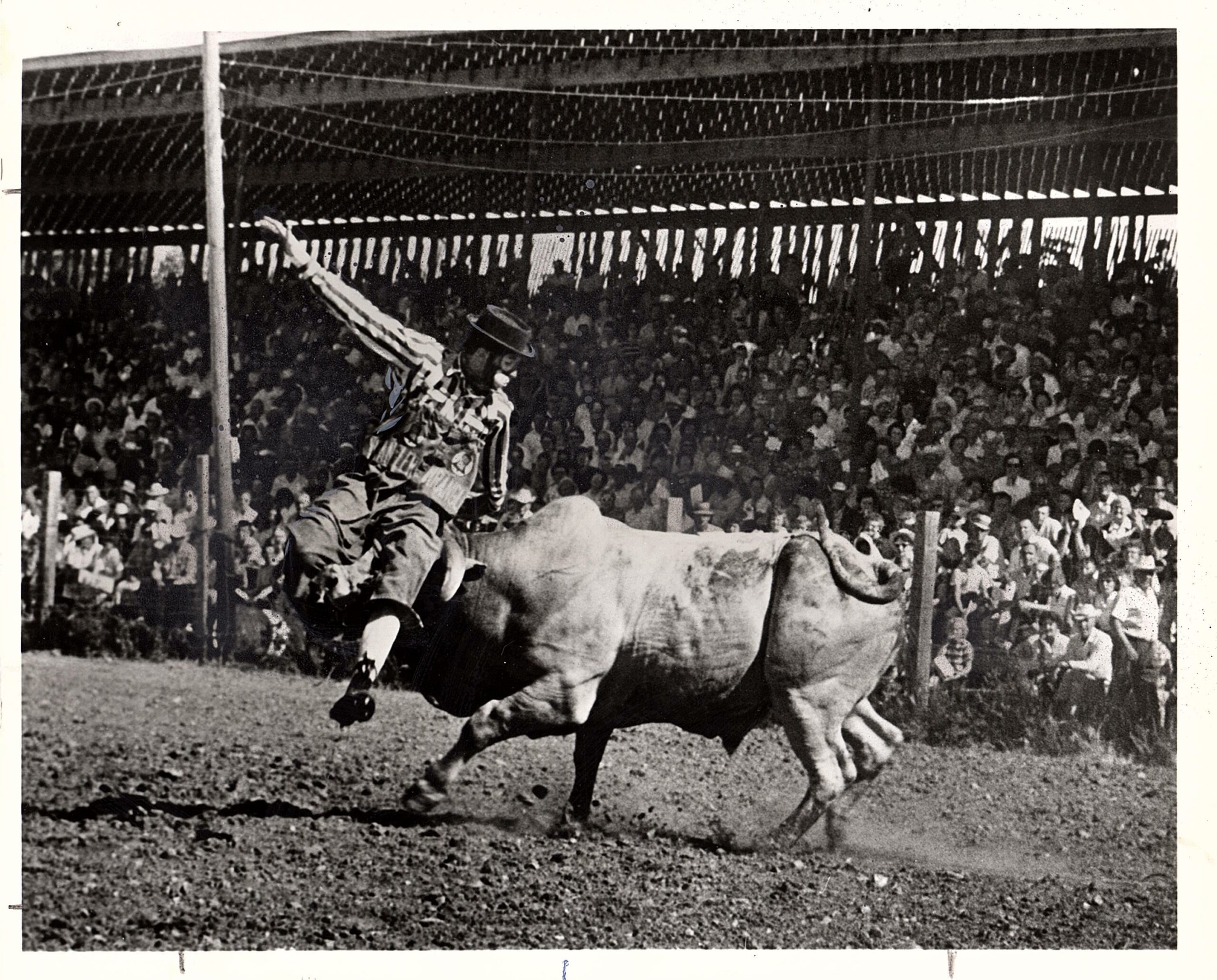
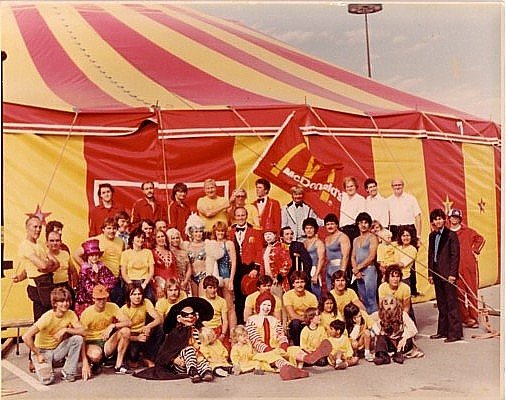
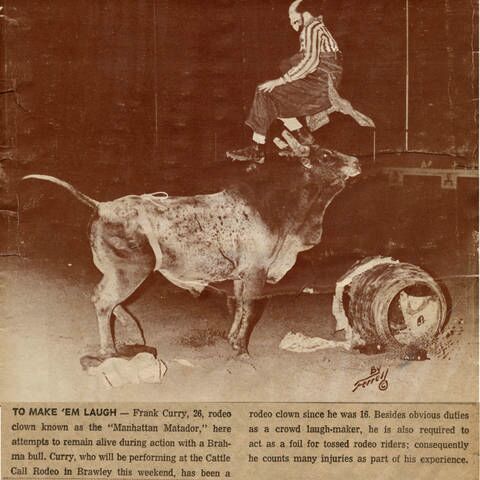
The group honored as the Advance Professionals wrote the book on live event promotion and management. Since the early days of P.T. Barnum it has been the work of those who executed the tour planning, marketing, advertising , sponsorship and public relations that made the circus a financial success. The circus is equal parts art and commerce. Nothing happens unless a ticket is sold. In the world of show business, without business there is no show.
Many alumni of this group have gone on to become successful entrepreneurs, agents, show producers, marketing and pr agency owners, sports and entertainment executives and venue managers. You will find them in leadership roles of media companies, major league sports (NHL, NBA, MLB, MLS), ticketing companies, concert and talent management, theme parks, fairs and expositions, cultural arts and non profit philanthropic organizations. The universal ties that bind the group is the collective shared learning experiences gained while working for the circus.
This is the biography of Frank Curry, a member of the Advance Professionals. It is followed by a short oral history video recording which took place in 2011.
Frank Curry, Visionary Showman Who Revolutionized the Circus World
Frank Curry, whose innovative marketing and showmanship shaped the modern era of live entertainment, particularly through his work with Ringling Bros. and Barnum & Bailey Circus and the Ronald McDonald Circus, passed away at the age of 71.
Born and raised in Manhattan on Fifth Avenue in the heart of New York City, Curry was a product of its energy and ambition. His early years hinted at a life destined for the spotlight. As a teenager in the 1950s, he worked as a ball boy for the New York Knicks while excelling in basketball, baseball, and tennis. These formative experiences set the stage for a dynamic career spanning sports, entertainment, and entrepreneurship.
Curry’s early days under the big top began humbly as a gofer in the Ringling Bros. press office at Madison Square Garden. But his ambition carried him far beyond. From 1957 to 1967, he thrilled audiences as a rodeo clown and bullfighter with the Professional Rodeo Cowboys Association, performing across North America. Even during rodeo off-seasons, Curry was a relentless learner, attending institutions like Holy Cross College and Columbia University, honing the knowledge and skills that would later define his multifaceted career.
In 1966, Curry joined the New York Daily News, contributing to a publication with a staggering readership of millions. His magnetic personality also led to appearances on game shows such as Password and To Tell the Truth.
But Curry’s life changed forever in 1967 when Irvin Feld, the legendary impresario of Ringling Bros. and Barnum & Bailey Circus, brought him on board. Curry became the first Vice President of Marketing during Feld’s transformative leadership. Collaborating with icons like Stan Lee and Marvel Comics, Curry redefined circus marketing, pioneering collaborations that injected fresh energy into the brand.
Assembling a world-class team of marketing professionals, Curry was lauded for his leadership. Michael Rosenberg, one of Curry’s protégés, called him a “genius” whose marketing acumen, work ethic, and charisma were unparalleled. “He taught us to be first-class promoters, not just salesmen,” Rosenberg said. Curry’s meticulous attention to detail, from his tailored suits to his persuasive presentations, set him apart, even in the high-stakes world of live entertainment.
Curry’s tenure at Feld Entertainment left an indelible mark, but his career didn’t stop there. He revitalized Garden Bros. Circus in Canada, tripling its revenue at Toronto’s Maple Leaf Gardens. Later, he served as Executive Director of McDonald’s Productions, GMBH, in Munich, a role that took him to circuses across Europe.
Perhaps his most enduring achievement came with the Ronald McDonald Circus, which he created and led from 1982 to 2002. This family-focused show brought the magic of the circus to communities across North America, starting with a groundbreaking debut in Quebec and Ontario that drew capacity crowds in 28 cities. In Nashville, the Ronald McDonald Circus broke attendance records, with over 80,000 attendees in a single weekend, cementing its place as a phenomenon in family entertainment. Curry’s efforts earned him McDonald’s International Marketing Recognition Award, a rare honor underscoring his impact.
Frank Curry’s legacy is woven into the fabric of live entertainment. A visionary promoter and tireless innovator, he redefined what the circus could be—blending tradition with bold, modern strategies to captivate new generations of audiences. Whether under the dazzling lights of the big top or behind the scenes orchestrating deals, Curry’s passion for bringing joy to millions was unmatched.
He is survived by two sisters and a legion of colleagues and fans who will long remember his charisma, creativity, and enduring contributions to the world of entertainment.
Frank Curry, circus producer and rodeo clown dies at 71
BY AMUSEMENTTODAY | AUGUST 16, 2012
NEW YORK, N.Y. — Once a renowned rodeo clown and bullfighter, innovative circus producer Frank Curry died on July 28 in Bowling Green Kentucky. He was found, according to his family, near the entrance to the city’s Hobson Grove Park, a recreational facility in a sylvan setting.
In his rodeo days, Curry was billed as The Manhattan Matador. During his early circus years, he was vice president of marketing for Ringling Brothers and Barnum & Bailey Circus. However, as creator and producer of the Ronald McDonald Circus, considered his crowning achievement, he was known as a ringmaster of creativity whose physical stature was enhanced by a ready smile and a white felt Stetson.
Born in New York City in 1940, Frank Curry was the son of Mr. Francis R. Curry, an attorney and his wife, Eileen McCarty Curry, an activist in Roman Catholic charitable organizations. His grandfather was John F. Curry, leader of Tammany Hall in the politically tumultuous years from 1929 until 1934 when New York State Governor Franklin Delano Roosevelt became President of the United States.
Like most who were children of the late 1940s-early 1950s, Curry watched the new “magic box” that was television. Children’s programming at the time featured Westerns with stars such as Gene Autry, Roy Rogers and Dale Evans, Gail Davis as Annie Oakley and Clayton Moore and X Brands as “The Lone Ranger and Tonto.” Children also spent time with cheer clowns like Clarabelle on the Howdy Doody Show, and troupe members appearing on the Sealtest Company’s “Big Top” and Claude Kirchner’s “Circus World.”
As a teenager, he began sneaking into Madison Square Garden, then on 50th Street and 8th Avenue, to see in “real life” the rodeos and circuses he had only seen on the little screen. There he met rodeo clown idols The Cajun Kid and Buck Legrand and legendary German-born elephant trainer Hugo Schmidt whose career advice was “You make good elephant man.”
After being an independent rodeo clown and a Ringling Brothers marketing executive, Curry conceived The Ronald McDonald Circus, a live entertainment he would create and produce.
His goal was to produce a successful enterprise that was affordable for families at the same time that it was the best in quality, versatility an vigor. His goal was realized, as exemplified by an engagement in 2003 at the Bridgestone Arena in Nashville, Tennessee. During seven performances in a four-day engagement, the show garnered more than 85,000 attendees, a record number for such an event.
A Mass of the Resurrection was celebrated for Frank Curry at his parish, Saint Ignatius Loyola Church, in Manhattan on Monday, August 13. A memorial service will be scheduled in the fall.
Curry is survived by two sisters, Ann Curry Marcato, an advertising consultant, and Barbara Curry, a writer, as well as two nephews and numerous cousins.
Local reporters owe a lot of stories to the late Frank Curry, circus promoter, ex-rodeo clown and man of mystery
Death of a Hat Trickster
OCT 18, 2012
Back in 2009, a few months after I started working for SouthComm, my phone rang with a blocked number. The caller never identified himself. But he hinted he had documents I might like to see.
At the time, the Predators’ ownership group was going through a PR nightmare that made the lockout boondoggle look like a Zamboni ride. Attendance was slumping. Lead owner David Freeman’s federal income-tax liens were in the spotlight. Now the Sports Authority was asking whether the team had abrogated its lease. I was in the tall grass on the story, mostly because I never intended to be a sports business reporter.
But this mystery caller said he had some things that might help me out.
“Sure, just drop what you’ve got at my office,” I said.
“Oh, no, no, no,” crackled the voice on the other end. “Let me find somewhere else to leave them.”
About an hour later, my phone rang again.
“There’s an envelope for you with Maria, a pretty señorita at Las Cazuelas,” the mystery man said. “She’s expecting you.”
So I drove to the restaurant, an out-of-the-way Mexican joint on Nolensville Road. Not to get all Guy Noir on you, but yes, I found Maria. Sure enough, she had a manila envelope with my name on it.
By the time I got back to the office, I already had a voicemail from my mystery man, thanking me for my quick handling of the whole thing.
Had he been watching me? Was Maria an informant?
There were days this mystery man would call me a dozen times. And then there would be months of silence. He’d praise me when he liked my work, and he’d berate me when he didn’t. He always had a tip — big or small — and it was clear he was a voracious consumer of news. He had reporters in town he loved and columnists he abhorred.
It took me about six months, but I finally figured out who this man was. There aren’t that many people who attend Sports Authority meetings religiously.
My mystery caller was a man named Frank Curry.
Frank — he’d hate it if I called him by his last name, and even though he’d know it’s journalistic custom to add an honorific to the name of the dead, he’d probably slug me if I called him “Mr. Curry” — was a professional circus promoter. A four-day, seven-performance stretch of Ronald McDonald Circuses he put on at the arena once sold more than 86,000 tickets.
Frank was physically impressive, even into his 70s. He was tall, broad-shouldered and strong, with a map-of-the-world face topped by a white Stetson big as a Texas oilman’s. He once worked as a reporter for the New York Post, and somewhere in there he was also a rodeo clown. And for a man who so despised government toadies, it’s shocking to learn his granddad led Tammany Hall.
He was, by most accounts, self-made, learning the circus and rodeo businesses the hard way. And maybe that’s why he demonized the handouts — the “incentives” — the Sports Authority and Metro government give to professional sports teams in town.
Our joint devotion — or psychosis — of attending Sports Authority meetings forced Frank to reveal his identity far earlier in our relationship than he probably intended. By comparison, former Scene writer (and new attorney!) Matt Pulle said it took seven years before Frank told him his name.
He was a true pain-in-the-ass and he had a thousand stories and he loved to help write a thousand others. My anecdote about Las Cazuelas seems improbable, I know, except to people who knew Frank.
“If I wrote something he liked, he’d call me on the phone at 11 p.m. and start reading it aloud to me, cackling at the end of every quip,” Pulle said. “He was one of those lovable, quirky, mysterious characters that only reporters get to meet.”
I never wrote a sports business story without wondering how Frank felt about it. Sometimes, if I was lucky, he’d call and let me know.
Frank Curry was one of a kind: smart and funny, a lover of mystery and cloak-and-dagger, a hater of yes-men, a player as versed in the ins and outs of the Sports Authority’s relationship with the Predators as anyone in town.
And in early August, at age 71, he was found dead in a Bowling Green, Ky., park from what appeared to be a self-inflicted gunshot wound. I am saddened that such a vital man, such a back-whomping, larger-than-life figure, would leave this as his last mystery.
As for those documents he left with Maria? I still refer to them. They’ve helped me a million times.
So did Frank.


